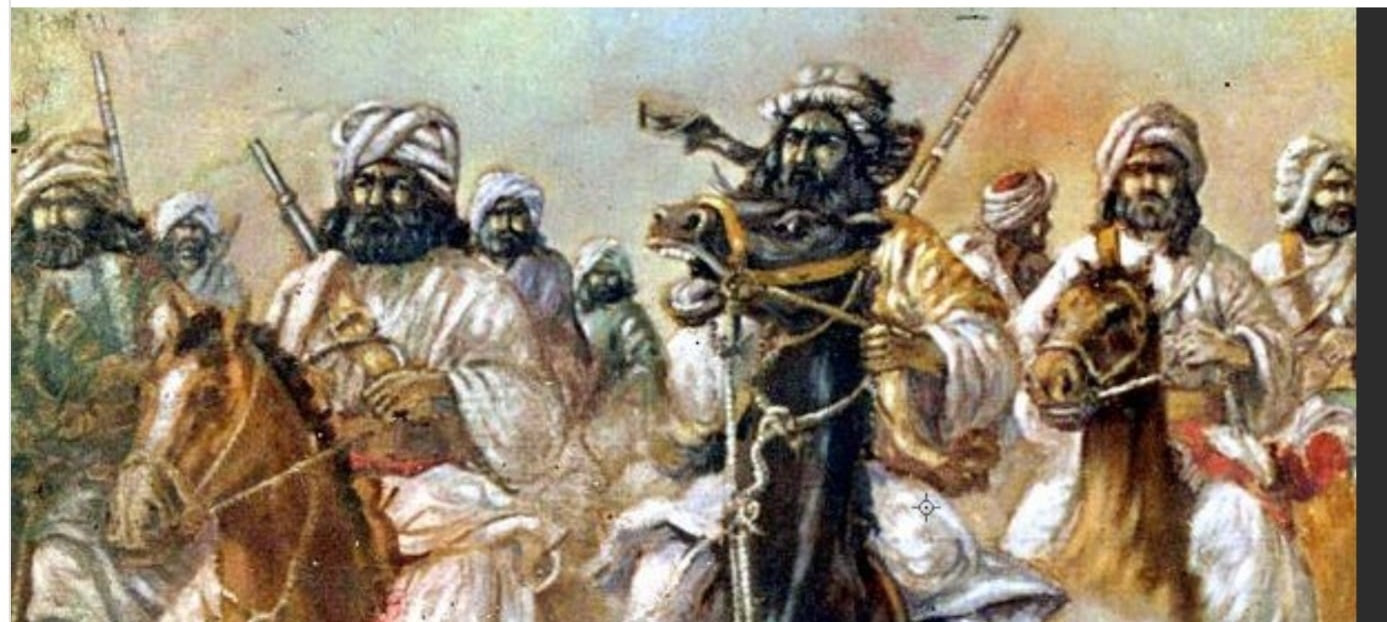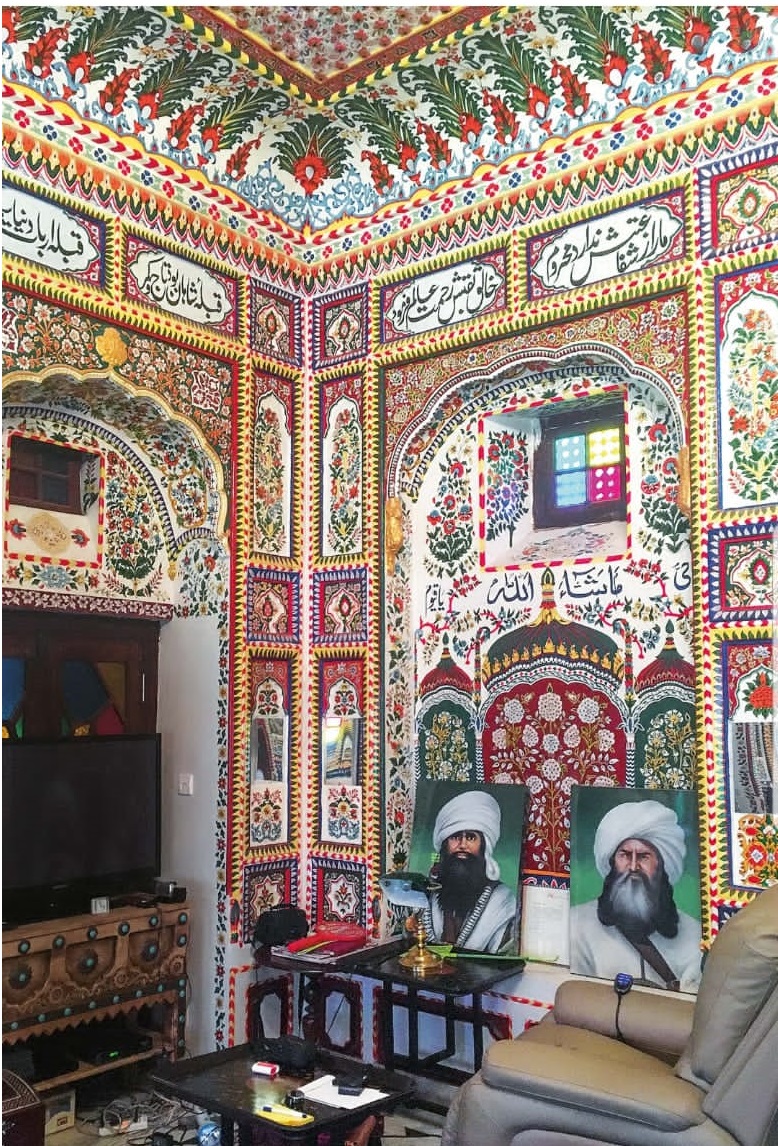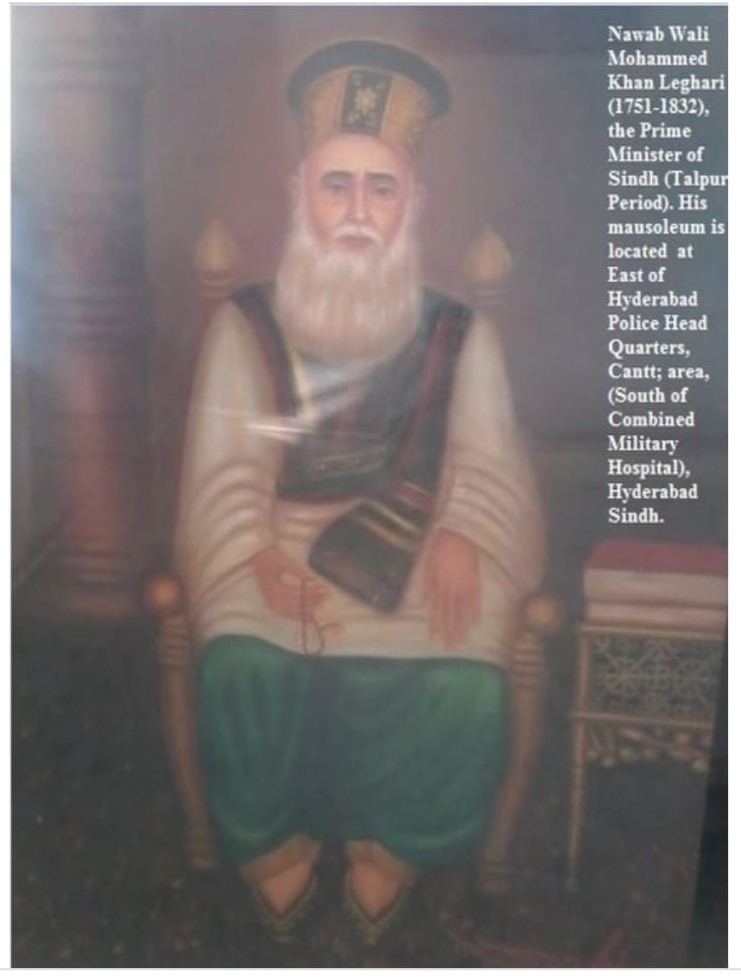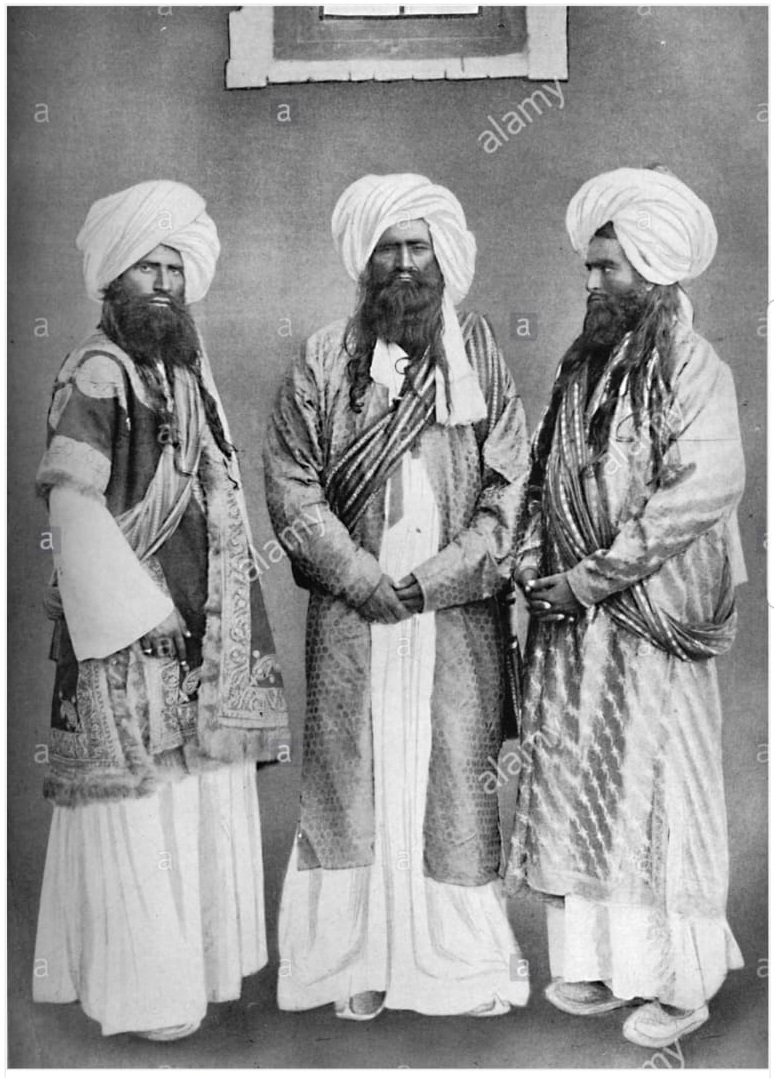ANCESTRY, HERITAGE AND HISTORY OF LAGHARI
“Let us, before we die, gather up our heritage, and offer it to our children”.
LAGHARI / LEGHARI
The Laghari, also written as Leghari, are a major tribe of the Baloch people. The Baloch originated and migrated from the Caucasus to Eastern Mediterranean, and then onwards to Balochistan, Punjab and Sindh in South Asia.
The Leghari Baloch tribe first settled at Barkhan in Balochistan and then migrated over 500 years ago to the mountainous outpost of Nimro (renamed Fort Munro by the British), known as Tuman Leghari, in Dera Ghazi Khan District after they conquered it. Choti Zareen near Dera Ghazi Khan has remained the headquarters of the Leghari tribe for over 500 years now. Most Leghari in Pakistan speak the Balochi / Saraiki language (1, 2, 3).
The Leghari ruled a vast territory of land as far north as Dera Ismail Khan, and as far south as Rahimabad (named after a Leghari Sardar), and as far away as Barkhan in the West in Balochistan, where the Leghari still hold 75000 acres of land between two valleys called the Leghari-Barkhan circle (4).
The Leghari tribe is one of largest if not the largest Baloch tribe in Pakistan. Each subtribe has a Sardar or chieftain, while the Chief Sardar has the title of Nawab or Tumandar as per Baloch tradition.
The Leghari Sardars (chiefs) in the Punjab belong to the Aliani clan of the Leghari tribe. They are mostly settled in Dera Ghazi Khan (Choti Zareen) and Rahim Yar Khan (Rahimabad) districts. The current 27th sardar (chief) of the Leghari tribe is Sardar Jamal Khan Leghari, son of the former President of Pakistan Sardar Farooq Ahmed Khan Leghari, and is the fourth generation of Leghari to be elected a member of the Punjab provincial assembly (5). Nawab Sir Jamal Khan Leghari, grandfather of former President Farooq Ahmed Leghari served as an MPA in 1921, 1924, 1927, 1930, 1937, 1946 1947 terms. He also presided over the first session of the Punjab provincial assembly in 1947 and in 1951 (6). Till today, over 65 Leghari have been elected as legislators from Punjab. In addition to the President of Pakistan, the Leghari from Punjab have served in senior positions such as federal and provincial ministers, bureaucrats, police officers, diplomats, judges and in the armed forces (1).
The Leghari first migrated from Dera Ghazi Khan to Sindh in 1680 at the invitation of the Kalhora. They were accompanied by other Baloch tribes like the Talpur, Jatoi, Khosa, Chandio, etc. Like the Leghari in Punjab, the Laghari in Sindh have also served in many senior positions from federal and provincial ministers to vice chancellors, judges, bureaucrats, medical doctors, engineers, entrepreneurs and musical artists. Likewise, there have been many members of the legislative assembly from the Laghari elected from Sindh (7).Dr. Javaid Laghari served as Senator and later as Chairperson of the Higher Education Commission (HEC) with the status of Federal Minister from 2006 to 2013.
HISTORY OF BALOCH
The Baloch race, to which the Leghari tribe belong, originate from the Caucasus region between the Caspian Sea and the Black Sea. The Baloch have the same roots as the Kurds, who still live in the Caucasus, while the Baloch migrated over 2000 years ago westwards to eastern Mediterranean and settled in Aleppo, Syria (8). There are many similarities in culture between the Baloch and the Kurd, including the culture, customs, and habits, and they both speak a Western Iranian language as well (9, 10).
Some historians claim that the Baloch are among the descendants of Amir Hamza, uncle of the Prophet Muhammad, which had settled in Aleppo. In 680, after the fight against the then ruler Yazid at Karbala, in which Amir Hamza's descendants supported and fought alongside Hussain ibn Ali, the grandson of Prophet Mohammed, the Baloch migrated back eastwards towards the Caspian region and then to Sistan, Iran, remaining there for nearly 500 years, before further migrating south to the Makran region in Balochistan. Ninth century Arab writers refer to the Baloch as living in the area between Kerman, Khorasan, Sistan, and Makran in what are now eastern Iran (8).
After a conflict with the local tribes in 971–972, the Baloch continued their eastward migration towards what is now the Balochistan province of Pakistan, although many still live in eastern Iranian Sistan-Balochistan and Kerman provinces. The Baloch are mentioned in the Shahnamah of Firdausi written between 977 and 1010 CE (9).
Jalal Khan led the Baloch from Persia to Makran. He was the ruler and founder of the first Baloch confederacy in 12th century and had four sons - Rind Khan, Lashar Khan, Hoth Khan, Kora Khan and a daughter, Bibi Jato. These five are claimed as the founders of the five great divisions of the Baloch: Rind, Lashari, Hoth, Korai, and Jatoi. The tribes of Leghari, Bugti, and Marri are all from Rind Baloch (11).
(On a side note, Prince Punnu, whom Shah Abdul Latif immortalized in his poetry Sassi-Punnu, was the grandson of King Hoth Khan Baloch, who traveled to Bhanbhore in Sindh in search of his beloved Sassi, the daughter of the Raja of Bhanbhore (12, 13)).
By the 13th–14th centuries, during the “Balochistan Ice Age”, a large number of Baloch tribes further migrated into Sindh and Punjab.
Mir Chakar Khan Rind Baloch (1468-1565)
Mir Chakar Khan Rind Baloch, popularly known as Chakar-i-Azam, is a hero of the Baloch people and an important figure in the Baloch epic “Hani and Sheh Mureed” (14). In the 15th century, Makran was ruled by Mir Chakar Khan Rind. In 1469, the Baloch established the cities of Dera Ghazi Khan and Dera Ismail Khan. During the 30-year civil war (1488-1518) between the Rind and Lashari, Dera Ghazi Khan was conquered by the Leghari in a victorious battle with another Baloch tribe. After the war, Mir Chakar Khan Rind moved down from the mountains of Balochistan to the plains of Punjab where he was joined by the other Baloch tribes which further expanded his rule (15).

Mir Chakar Khan Rind ruled a vast region from Makran in Balochistan to Okara in Punjab, and gained respect in all adjoining areas. During his rule in Balochistan and Punjab, the Mughal Emperor Humayun was defeated by Sher Shah Suri who had taken over the Indian capital Delhi. Humayun escaped to Sindh and then into Punjab, Balochistan and Persia.
Sher Shah Suri sent a message to Mir Chakar to unite with him against the Mughal to consolidate his gains. Mir Chakar appreciated the offer but refused to help Sher Shah Suri. Under the command of his son, Mir Shahdad Khan Rind, Mir Chakar’s forces instead joined the Mughal army of Emperor Humayun in 1555 after his long exile in Persia. Strengthened by Mir Chakar’s forces, Emperor Humayun returned back from Persia, recaptured Delhi, and ousted the Suri dynasty in 1556 (16).
LEGHARI IN BALOCHISTAN AND PUNJAB
As a reward, Emperor Humayun conferred vast “Jaagir” (lands) to Mir Chakar and other Baloch tribes in Punjab and Balochistan, even though the Baloch had already owned large estates (16). The Leghari, being one of the largest tribe of the Baloch under Mir Chakar Khan Rind, also received large estates from Emperor Humayun in the Eastern Balochistan and Western Punjab. These estates were in Barkhan and Dera Ghazi Khan which they own till the present day. The famous Sheesh Mahal at Choti Zareen near Dera Ghazi Khan was also gifted by Emperor Humayun to Sardar Muhammed Khan Leghari over 500 years ago, and is still in the possession of his descendent Sardar Muhammad Jaffar Khan Leghari (4,17).

Mir Chakar Khan Rind continued to rule a vast territory in Balochistan and Punjab till his death in 1565 and lies buried in Satghara Fort at Okara (18).
LAGHARI IN SINDH
Emperor Akbar ruled India from 1556 to 1605. Recalling how the Baloch tribes, including the Leghari, had helped his father Emperor Humayun recapture Delhi, he sought their help to control Punjab and Balochistan.
During Akbar’s reign, Sindh was brought into the Mughal Empire by Akbar, himself born in the Hindu Rajput kingdom of Amarkot (now Umerkot) in Sindh.
In 1657, Mian Nasir Kalhora was appointed by the Mughal as the Governor of upper Sindh, while lower Sindh was still retained by the Mughal with their headquarters at Thatta.
The Kalhora, whose rule extended till Dera Ghazi Khan, invited the Baloch to join their army. It was during this period in 1680 that the Leghari along with other Baloch tribe first came to Sindh from Dera Ghazi Khan.
Misunderstandings between the Kalhora and Mughal led to a war in 1699, in which the Baloch army fighting for the Kalhora won the war. As a result, the Mughal handed over complete control of Sindh to the Kalhora in 1701, a rule that lasted till 1782 (19).
The Kalhoras asked the Leghari to help them in administering Sindh. In 1713, Shahdadpur was established by the Leghari as the bureaucratic capital of upper Sindh (20).
The Kalhora army consisted mostly of Baloch tribes, including both the Talpur and the Leghari, who by now had become the strongest force in Sindh. Due to a major misunderstanding between the Kalhora and the Talpur, which included the killing of a number of Talpur elites, the Baloch army revolted against the Kalhora at the Battle of Halani, and eventually the Talpur took control as the rulers of Sindh in 1783 (21). Nawab Wali Mohammed Khan Leghari (1751-1832) was appointed as the Grand Wazir (Prime Minister) of Sindh under the Talpur rule in 1783.

Nawab Wali Mohammed Khan Leghari (1751-1832)
Nawab Wali Mohammed Khan Leghari served as Prime Minister and Commander-in-Chief of Sindh from 1783 till his death in Larkana in 1832 and proved to be one of the best administrators of Sindh to date. During his able leadership, Sindh was able to get Karachi from Khan of Kalat in 1795, Shikarpur from Afghans in 1804 and Umarkot from Jodhpur in 1813. The Municipality of Tando Wali Mohammad in Hyderabad was also established and named after him (22).
During his administration, he reconstructed the Fort of Ranikot, known as the Great Wall of Sindh, which is one of the largest forts in the world with a circumference of approximately 32 kilometres. (It is still not known who originally built the fort, as some believe that it was built during the regimes of the Sassanians, the Scythians, the Parthians or the Bactrian Greeks. However, more recent evidence shows that the fort originated and was built during the Talpur dynasty during the administration of Nawab Wali Mohammed Khan Leghari, which still needs to be confirmed by researchers) (23).
Nawab Wali Mohammed Khan Leghari died as Prime Minister in Larkana, and willed that he be buried at Hyderabad. His mortal remains were kept as “amanat” on the grounds at Tajar Bagh at Larkana from where he had governed Sindh (24). They were later moved to Hyderabad, where he now lies in a mausoleum behind the Combined Military Hospital (CMH)(25).
After his death in 1832, the Talpur were not able to govern Sindh, and within 10 years, in 1843 at the battle of Miani, the Talpur lost to Charles Napier and Sindh fell under the British rule (26,27).
Nawab Wali Mohd Khan Leghari had four sons and two daughters. One daughter married Sardar Rahim Khan Leghari who was the then Sardars of the Leghari in Dera Ghazi Khan and the other married the Nawab of Bahawalpur (28). (On a separate note, the Nawab of Bahawalpur gifted large estates to Sardar Rahim Khan Leghari in Rahim Yar Khan district, who had migrated from Dera Ghazi Khan after a dispute within the Leghari tribe, who subsequently established Rahimabad as the other headquarters of Leghari in the south of Punjab).
The Laghari are settled all over Sindh but mostly concentrated in Hyderabad, Badin, Larkana, Ghotki, Sukkur, Sanghar, Dadu and Thatta. Sardar Nadir Khan Leghari, who is from the Aliani clan and a descendent of Sardar Rahim Khan Leghari with their ancestral village in Rahimabad, is based in Ghotki. The descendants of Nawab Wali Muhammad Khan Laghari are based in Tajpur, where the mausoleum of his grandson Faqir Nawab Wali Muhammad Khan Laghari (1836-1914), a Sufi poet, is also located, who had renounced worldly affairs and handed the sardari over to his brother (29). The descendents of Sardar Lal Bux Laghari (1840-1920), another Laghari Sardar, are settled at Buxo Laghari near Hyderabad (30).
Dr Javaid Laghari
Dr Javaid Laghari is the great grandson of Sardar Lal Bux Laghari (1840-1920), mentioned in the British land records of 1888 as a Leghari Sardar, who established the Laghari estates at Buxo Laghari near Hyderabad (30).

Dr Javaid Laghari was a close associate of former two-time Prime Minister of Pakistan Benazir Bhutto. He was Professor of Electrical and Computer Engineering and Director of Space Power Institute at SUNY Buffalo, and was the founding Project Director and President of SZABIST. Dr Laghari was elected Senator from 2006 to 2009 on a technocrat seat. He also served as the Chairperson of the Higher Education Commission (HEC) with the status of a Federal Minister from 2009 to 2013.
Dr Laghari’s father Rasool Bux Laghari was one of the leading advocates of Sindh in pre-partition Pakistan and a contemporary of leading lawyers of Sindh A K Brohi, Abdus Sattar Pirzada, Ram Jethmalani and L K Advani (who later became the Deputy Prime Minister of India). Rasool Bux Laghari graduated with honors with second position from Bombay University at the prestigious Elphinstone College Bombay. He served many districts in Punjab as District and Sessions Judge, particularly in the Saraiki belt of Rahim Yar Khan, Multan and Mianwali, where he was known and respected as a Laghari Sardar from Sindh. He last served as District and Sessions Judge Karachi (when all Karachi was one district) till his passing away in 1973 due to a heart stroke at the young age of 54.
Siblings of Dr Javaid Laghari include Dr Khalid Laghari (General Practitioner, UK), Dr Najma Sabbuba (Physician, Jordan and USA), Tariq Laghari (former Director General SAZDA) and Dr Farooq Laghari (former Secretary Sindh government). He has two sons Dr Zaid Bux Laghari (medical doctor and CEO Live100Plus, USA) and Asad Khan Laghari (CEO LVGHARI, a NY based production company and branded streetwear).
REFERENCES
- https://en.wikipedia.org/wiki/Leghari_tribe
- https://en.wikipedia.org/wiki/Fort_Munro
-
https://www.facebook.com/BalouchNation/posts/leghari-tribethe-leghari-or-laghari-are-a-baloch-tribe-living-in-the-balochistan/503218843101074/
-
http://www.destinations.com.pk/rooted-in-the-past/
-
http://www.leghari.com/
-
https://www.thenews.com.pk/archive/print/435134-fourth-generation-of-leghari-in-punjab-assembly
-
http://dictionary.sensagent.com/Leghari/en-en/
-
https://en.wikipedia.org/wiki/Baloch_people
-
http://balochhomeland.weebly.com/facts-article9.html
-
https://en.wikipedia.org/wiki/Kurds
-
https://en.wikipedia.org/wiki/Jalal_Khan
-
https://en.wikipedia.org/wiki/Hoth_Khan_Baloch
- https://en.wikipedia.org/wiki/Sassui_Punnhun
-
https://en.wikipedia.org/wiki/Mir_Chakar_Rind
-
https://en.wikipedia.org/wiki/Baloch_civil_wars
-
https://en.wikipedia.org/wiki/Humayun
-
https://tribune.com.pk/story/1128979/flames-fire-erupts-500-year-old-sheesh-mahal
-
https://dailytimes.com.pk/385143/forgotten-wonders-the-tomb-of-mir-chakar-rind-and-satghara-fort/
-
http://www.self.gutenberg.org/articles/Kalhora
-
https://en.wikipedia.org/wiki/Shahdadpur
-
https://en.wikipedia.org/wiki/Talpur_dynasty
-
https://commons.wikimedia.org/wiki/File:Portrait_of_Nawab_Wali_Mohammed_Khan_Leghari_(1751-1832),_the_Prime_Minister_of_Sindh_(Talpur_Period).jpg
-
https://en.wikipedia.org/wiki/Ranikot_Fort
-
https://antiquities.sindhculture.gov.pk/index.php/activities/conservation-work/conservation-and-restoration-of-historical-built-structure-of-tajjar-building-at-jinnah-bagh-larkano
-
https://heritage.eftsindh.com/districts/hyderabad/nawab-wali-muhammad-leghari.php
-
https://www.dawn.com/news/871105/the-reality-of-talpur-rule
-
https://thewire.in/culture/peoples-history-pakistan
-
Personal communication with Sardar Nadir Akmal Leghari, October 29, 2020
-
https://heritage.eftsindh.com/districts/matiari/faqir-nawab-wali-leghari.php
-
http://www.sanipanhwar.com/History%20of%20Alienations%20in%20the%20Province%20of%20Sindh%20Volume%20-%20II.pdf